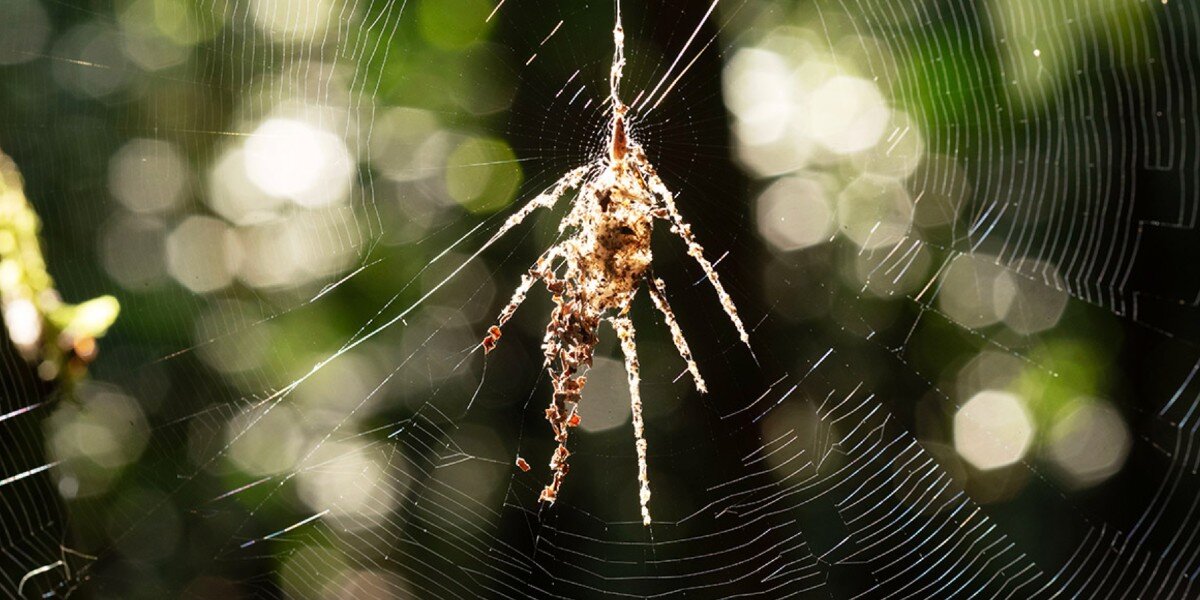If you were to quickly look at the image below, what would you think it was? At first glance, it seems to be a straightforward picture of a spider sitting on a web.
 George Olah
George Olah
But if you look more closely, you’ll realize you’ve been tricked — the “spider” is actually a cleverly-constructed decoy.
A group of scientists recently came out with a groundbreaking study detailing a never-before-documented spider behavior. In the paper, the researchers describe how they’ve observed two species of Cyclosa spiders building imitation arachnids and weaving them into their webs.
 Lawrence E. Reeves
Lawrence E. Reeves
Many orb-weaving spiders are known for constructing stabilimenta, or web decorations, which are typically nothing more complex than a spiral or zigzag pattern. But these two Cyclosa species, located in Peru and the Philippines, are able to use silk, plant debris and insect carcasses to build convincing spider dummies in as little as 90 minutes.
“[T]hese spiders construct stabilimenta composed of detritus and silk, arranging the debris in the web into a shape that visually resembles the silhouette of a larger spider,” the authors of the paper wrote.
But what purpose do these imitation spiders serve? The researchers strongly suspect that the Cyclosa build them to ward off predators such as birds or lizards.
 Richard Kirby
Richard Kirby
“This structure may serve as a ‘decoy’ that serves an anti-predator function of misdirecting or repelling the attacks of some predators,” the authors of the paper wrote.
Both species of Cyclosas’ bodies are under 1 cm long, but the mock spiders they build are much longer. The large decoys give off the illusion that a much more threatening arachnid is occupying the web. The stabilimenta are so convincing that even the researchers mistook one for an actual spider on an early trip into the field.
“On average, the length of the stabilimenta was 3.3 times that of the spider’s body length,” the authors of the paper wrote.
The image below illustrates the size difference between the spider (left) and the imitation (right):
 Lawrence E. Reeves
Lawrence E. Reeves
More research is needed in order to fully understand the many ways the spiders are making use of these web decorations. The scientists even found that female Cyclosa spiders will sometimes hide their egg sacs in the “body” of the fake arachnids to protect them.
While spiders are often misunderstood or even feared, this newly-discovered behavior suggests that arachnids are more complex and even intelligent than many people give them credit for.
 Postal Worker Discovers Note Protecting Tiny Animal Living In Mailbox”She wants a safe place to lay her eggs … “
Postal Worker Discovers Note Protecting Tiny Animal Living In Mailbox”She wants a safe place to lay her eggs … “
